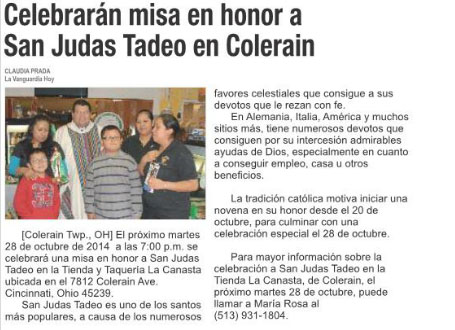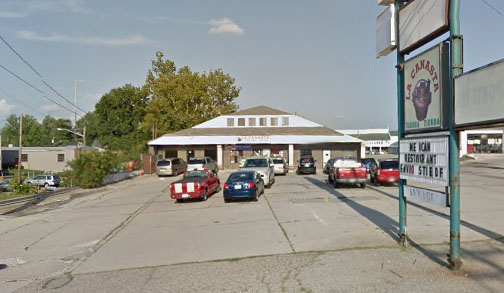This is one in a series of guest posts authored by students in an undergraduate course I taught during Spring 2014, “Protestantism and the Development of American Culture.” Each student’s task was to write an informative essay explaining some way that Protestants have shaped (or tried to shape) American culture. Students knew that their essays would be posted to this blog, so they would have a real-world online audience.
Students are entirely responsible for the content and quality of their essays; I am merely the vehicle for broadcasting them (though on the whole I’m reasonably pleased with the results).
Protestant Ideals and the Know-Nothings
Eddie Evans
Most Americans are acutely aware of the increasing Spanish populations in the southwestern United States. The inclusion or exclusion of this group is a platform issue for major political candidates. Even those of a more inclusive mindset debate the benefits that they should receive and the extent to which they can participate in American democracy. American Protestants of the first half of the 19th century were asking similar questions due to the arrival of Irish Catholics and other western European immigrants. This essay will examine the basis of nativist thought in America, and look at how the most famous nativist political organization, the Know-Nothings, was so influential.
History of Nativist Thought
Nativism is a response to increasing cultural pluralism that has repeated throughout American history. To better understand the environment in which 19th century Nativist groups flourished, one must go back to the Colonial Period and the Puritan establishments. In his 1992 article, sociologist Michael W. Hughey points out that both inclusive and exclusive values were fused in the sociopolitical systems of the Puritans. The democratic ideals of open government, egalitarian democracy, and the unalienable rights of man were cornerstones of Puritan republican government. However, these rights were not for everyone. Women and religious minorities were seen as “unsuitable” to uphold democratic and Protestant ideals, and therefore were excluded from practicing in the open form of government.
One specific religious minority that was seen as “unsuitable” was Catholics. In colonial Massachusetts, while Catholics were tolerated in communities, their Protestant neighbors could drive them out if they did not uphold certain moral standards. Even the morally suitable Catholics could not hold positions of public power since they did not belong to the state affiliated church.
The implicit link of Protestantism and democracy only became stronger during the revolutionary period. In the French and Indian War, “the battles were interpreted as cosmic contest between God and Satan.” Protestants believed that “Satan’s French Papist legions were committed to religious and political tyranny.” Since the Protestants and America prevailed “surely Liberty must be the cause of God.” This belief was confirmed a few decades later when the colonists defeated the British in the Revolutionary War. Hughes claims “liberty was thus elevated to sacred status and identified with the Kingdom of God, which in turn was identified with the American Republic.”
In the New Republic, Protestants continued to uphold their religious and political values. It is at this point that Hughes coins the term “Americanism”, to describe the entanglement of Protestant and Democratic values. Never before in history had a nation been built upon ideals more than geographic boundaries, and Americanism was this principal ideal.
As the Republic grew, it became increasingly difficult to orchestrate these ideals in every facet of a functioning democracy. John Adams confessed, “he never understood a republican government and no man ever will.” Hughes points out that throughout John Adams’ political career, politicians struggled to with the manifestation of Americanism in specific policies. Instead of defining “Americanism” explicitly, it became easier to define Americanism as what it is not. Groups that have, at some point, been labeled “un-American” include: Mormons, Jews, Freemasons, communists, and most important for our purposes, Catholics.
Political Landscape of Antebellum America
Preceding the Know Nothing party was a two party system composed of Democrats and Whigs. The rivalry between the two parties was known as the Second Party system. Southern farmers made up a large portion of antebellum democrats. They opposed government spending and wanted to keep intervention at a minimum. The Whig Party consisted largely of pro-business New Englanders (the decedents of the puritans) who wanted to see government regulate morality while still favoring market interests.
The collapse of the Whigs has historically been attributed to different opinions among party members about slavery. However, not all share this view. Historian Bruce Levine feels that “the Whigs disappeared in the early 1850’s because they failed to echo with sufficient force and unanimity the antiforeign and anti-Catholic sentiments of their native-born Protestant constituents.” Further evidence that slavery was not the most decisive factor: old Whig voters appreciated the creation of a party “whose focus was on Catholics, immigrants, and unresponsive politicians, not the slavery issue.” In this failure of the Whigs, rises the Order of the Star Spangled Banner and the Order of United Americans. They will form a political alliance and become nicknamed “Know-Nothings” because of the secrecy of their leadership. When asked to explain their political views or agendas, members would simply respond, “I know nothing.”
Early Political Momentum
1854 in New York City marked the first time a Know-Nothing affiliated candidate received significant attention. Lawyer and nativist, Daniel Ulmann received over 25% of the votes in New York City and State and was named a congressman. In fact, that year, over half of the New York congressmen aligned themselves with Know-Nothing principles. The group was growing, and fast. In 1846, The Order of United Americans had 2,000 members in New York City alone. By 1851, that number had grown to 7,000. By 1855, there were 30,000 men officially initiated the organization.
A Leader Rises
The Order of United Americans (official name for the Know-Nothings) most prominent member was Thomas R. Whitney. From a middle class background, Whitney was the son of a New York City watchmaker and followed in his father’s trade. During his apprenticeship, he inherited a disciplined work ethic and had access to his father’s wealthy network of clients. One of who was important Whig member and OUA charter-member, Mayor Harper. Whitney joined the OUA, and quickly gained recognition for his energy and work ethic. He attended a national nativist convention in Philadelphia in 1845 and became the editor of republican and nativist magazine, The Republic. In 1856 Whitney published his most influential piece of Know-Nothing literature, A Defense of American Policy.
The Know-Nothings’ America
The aforementioned 400-page Know Nothing Bible is an insightful look into the collective minds of the leadership of the organization. Interestingly, Whitney’s ideal America sounds very reminiscent to the Puritan society. Whitney and the Order believe that men “are entitled to just such privileges, social and political, as they are capable of employing and enjoying rationally. Since human beings exhibited this capability to differing degrees, they were naturally entitled different rights and privileges.” This is re-manifestation of Hughey’s theory about American democracy; a mixing of democratic and Protestant ideals that are simultaneously inclusive and exclusive.
The Puritans took this idea for granted. They had the privilege of establishment and few religious minorities to challenge their dominance. Whitney and other Know-Nothings were not in the same circumstance. Irish Catholic immigrants were arriving in massive numbers and flexing their political muscles. Unlike the Puritans, Whitney is acutely aware of the problems that exist while trying to promote both nativism and democracy. He writes, “I take direct issue with democracy. As I understand the term, I am no democrat. If democracy implies universal suffrage…without regard to the intelligence, the morals, or the principles of man, I am no democrat.”
Whitney’s character attacks could fall on any non-white, non-Protestant person living and working in America in the 1860’s. However, nativists had the harshest disdain for Irish Catholics. The vast majority of Irish immigrants brought their Catholic religion with them. In the eyes of a 19th century Protestant, Catholics were “hierarchical, philosophically monarchical, virulently antirepublican, aimed to subvert self government and individual freedom everywhere.” In other words, it is inconceivable to be both Catholic and democratic at the same time. This is a standard, Protestant critique of Catholicism that can be traced back to the Reformation, and the narrative was only strengthened in Colonial America.
Catholicism was not the only concern Know-Nothings saw in the Irish immigrants. The Irish were crammed into the poorest urban centers where they worked the most undesirable, and unskilled jobs. Overpopulation and crime were only a few of the side effects of the deplorable living conditions in major American cities such as New York. This led to the Irish being branded as “lazy, thieving drunkards, poor material for either a labor force or citizenry.”
The nativist groups that were able to gain so much momentum eventually declined due to the emergence of the Republican Party and the Civil War. Irish Americans were able to prove their allegiance to the nation by fighting in the war, and this helped alleviate some of their struggles. Though the Know-Nothings have long vanished, the nativist thought that fueled their rise to power still remained in America. Whether it was the Red Scare, or our current Spanish immigration policy, one can find remnants of the sociopolitical nativist background dating back to the Puritans.







